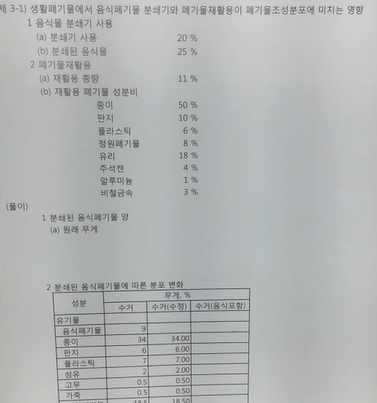한국은 도시에 집중된 인구로 인해 발생한 대량의 생활폐기물을 처리하기 위해 대규모 주거단지 내에 자동집하시설을 기반으로 한 자원회수시설을 적용 확대하고 있다. 이에 본 연구는 새...
http://chineseinput.net/에서 pinyin(병음)방식으로 중국어를 변환할 수 있습니다.
변환된 중국어를 복사하여 사용하시면 됩니다.
- 中文 을 입력하시려면 zhongwen을 입력하시고 space를누르시면됩니다.
- 北京 을 입력하시려면 beijing을 입력하시고 space를 누르시면 됩니다.

Integrated Waste Collection And Treatment System In The Housing Complex = Focusing On A Comparative Analysis Of Hammarby Sjostad And Eun-Pyoung New Town
한글로보기https://www.riss.kr/link?id=A99827386
- 저자
- 발행기관
- 학술지명
- 권호사항
-
발행연도
2013
-
작성언어
English
- 주제어
-
등재정보
KCI등재
-
자료형태
학술저널
-
수록면
161-180(20쪽)
- 제공처
-
0
상세조회 -
0
다운로드
부가정보
국문 초록 (Abstract)
한국은 도시에 집중된 인구로 인해 발생한 대량의 생활폐기물을 처리하기 위해 대규모 주거단지 내에 자동집하시설을 기반으로 한 자원회수시설을 적용 확대하고 있다. 이에 본 연구는 새로운 폐기물 시설이 지속가능한 환경 인프라로써 국내에 정착 가능성을 측정하고자 한다. 객관적으로 유효한 분석 결과를 위해 국내의 은평 뉴타운과 성공적인 사례로 알려져 있는 하마비 허스타드를 비교한다. 구체적인 비교의 틀로서 지속가능성을 평가하는 캠벨의 ‘계획가의 삼각형’ 이론을 차용한다. 삼각형을 구성하는 세 가지 요소인 환경, 사회, 경제적 기준으로 개발실행 결과 보고서와 전문가 인터뷰를 참고하여 연구한다. 결론적으로 비교연구를 통해 첫째, 환경부문에서는 자원회수시설의 다양성 추구를 통해 폐기물 절감과 에너지 창출의 이중혜택을 극대화할 수 있다. 둘째, 경제부문에서 젒분한 재원조달을 위해 다양한 재정지원 프로그램의 중요성을 알 수 있다. 셋째, 사회부문은 예산집행과 혜택분배 등 경제부분과 상젒되어 갈등 발생의 가능성이 있다. 따라서 관련 이익관계들의 교류를 적극적으로 장려하고 투명한 예산집행이 원활하고 지속가능한 폐기물 시설 개발을 위한 개선방안이 될 수 있다는 것을 사례비교를 통해 유추할 수 있다.
다국어 초록 (Multilingual Abstract)
In Korea, application of resource recovery facilities utilizing automatic collection system is expanding to address the concentrated occurrences of household wastes in apartments. This study aims to assess the feasibility of a new waste system adopted...
In Korea, application of resource recovery facilities utilizing automatic collection system is expanding to address the concentrated occurrences of household wastes in apartments. This study aims to assess the feasibility of a new waste system adopted into the cities of Korea as sustainable eco-infrastructure. In order to analyze the objective results, a domestic case of Eun-Pyoung New Town and a successful case of Hammarby Sjostad were compared. For analytical framework, we followed ‘Planner’s Triangle’ presented by Campbell to evaluate the sustainability of this system. The ‘triangle’ consists of three components: environmental, societal and economic criteria. We reviewed development result reports and expert interviews based on the three criteria. The results were as follows. First, environmentally, the diverse resource recovery facilities maximize dual benefits of reducing wastes and producing energy. Second, economically, the importance of various financial assistance programs becomes apparent. Third, societally, conflicts may result from contradicting interests such as budget execution and profit distribution. These results implied that communication among interests and transparency of budget execution are key for improvement methods to be sustainable waste system.
목차 (Table of Contents)
- 국문요약
- Abstract
- 1. Introduction
- 2. A Word about Recovery Facilities Based on AVAC System
- 3. Planning Context of Hammarby Sjostad and Eun-Pyoung New Town
- 국문요약
- Abstract
- 1. Introduction
- 2. A Word about Recovery Facilities Based on AVAC System
- 3. Planning Context of Hammarby Sjostad and Eun-Pyoung New Town
- 4. Analysis of Case Study, Hammarby Sjostad and Eun-Pyoung New Town
- 5. Conclusion
- Reference
동일학술지(권/호) 다른 논문
-
창작클러스터 내 네트워크 수준과 그 영향요인에 관한 연구
- 한국도시설계학회
- 이승훈(Lee, Seung-Hoon)
- 2013
- KCI등재
-
- 한국도시설계학회
- 김도년(Kim, Do-Nyun)
- 2013
- KCI등재
-
- 한국도시설계학회
- 홍윤순(Hong, Youn-Soon)
- 2013
- KCI등재
-
가로활성화사업에서 거주자의 참여집단별 만족도 및 사업성과에 미치는 영향
- 한국도시설계학회
- 홍경구(Hong, Keong Gu)
- 2013
- KCI등재




 DBpia
DBpia





